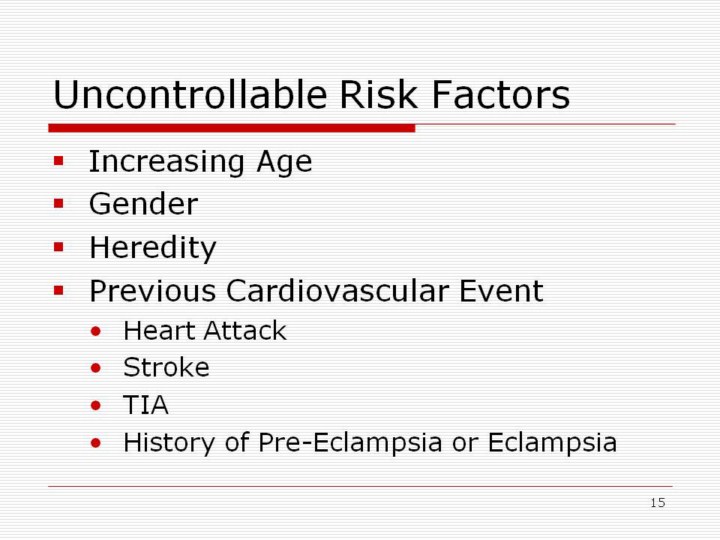| front |1 |2 |3 |4 |5 |6 |7 |8 |9 |10 |11 |12 |13 |14 |15 |16 |17 |18 |19 |20 |21 |22 |23 |24 |25 |26 |27 |28 |29 |30 |31 |32 |33 |34 |35 |36 |37 |38 |39 |40 |41 |42 |43 |44 |45 |46 |47 |48 |49 |50 |51 |52 |53 |54 |55|56 |57 |58 |59 |60 |61 |62 |63 |review |
 |
There are some risk factors that you are not able to control.
As women grow older, their risk of heart disease and stroke begins to rise and keeps rising with age. It is a fact that men have a greater risk of heart attack than women, and they have attacks earlier in life, but each year about 46,000 more women than men have strokes, and about 60 percent of total stroke deaths occur in women. Both women and men are more likely to develop heart disease or stroke if their close blood relatives have had them. Race is also a factor. Black women have a greater risk of heart disease and stroke than white women. Compared with whites, African-American men and women are more likely to die of stroke. Previous heart attack or stroke or transient ischemic attack (TIA) are significant risk factors. A TIA, also called a mini-stroke is caused by temporary disturbance of blood supply to an area of the brain, resulting in a sudden, brief decrease in brain function. A transient ischemic attack (TIA ) is also is a risk factor and predictor of a major stroke. Women who've had a heart attack are at higher risk of having a second heart attack. Twenty-two percent (22%) of women ages 40–69 who survive a first stroke or heart attack will have another stroke, heart attack or fatal coronary heart disease within five years. And as we just mentioned, a history of pre-eclampsia or eclampsia is a risk factor. |